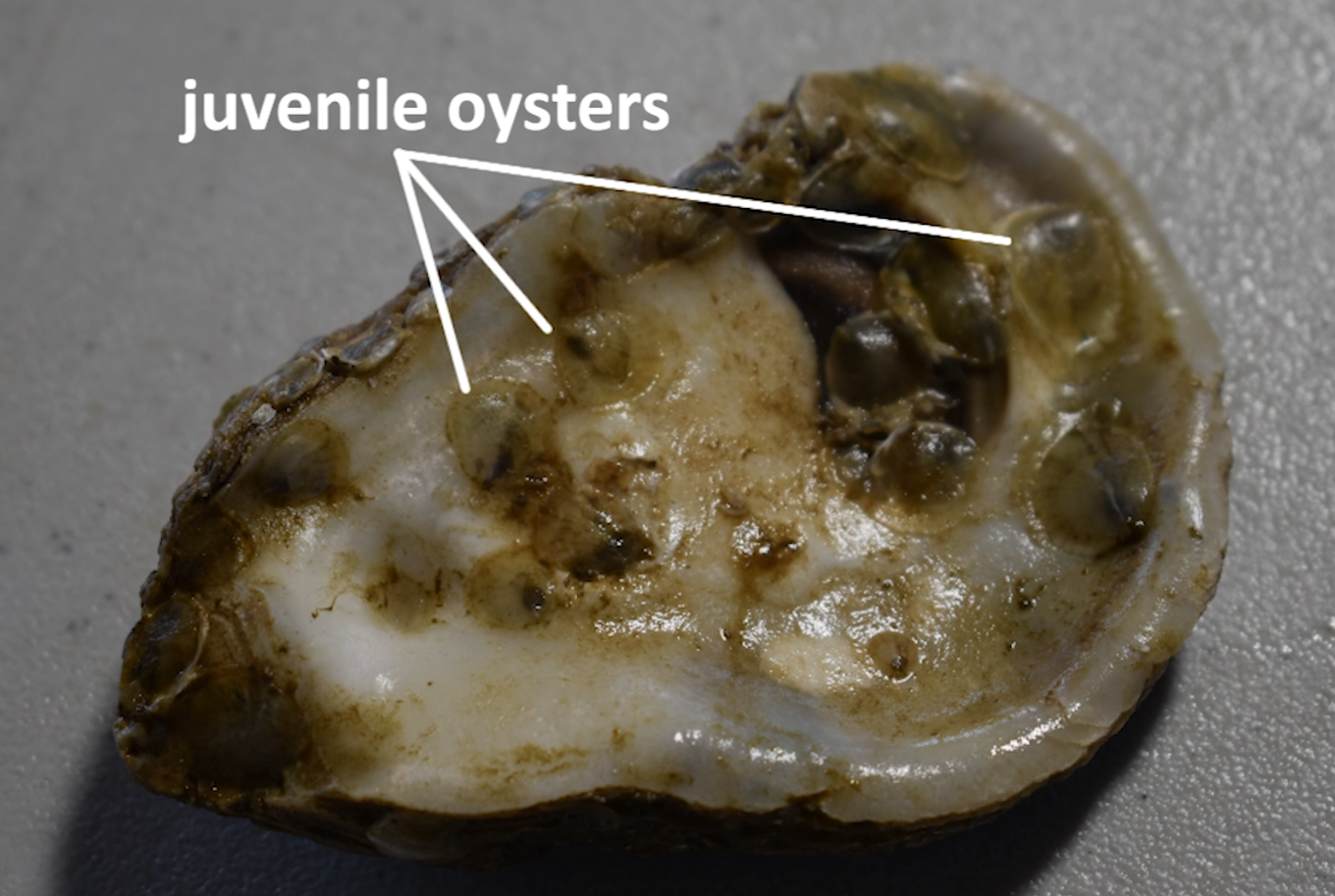
This past fall, NCCOS staff and partners planted an estimated 350,000 juvenile oysters off the pier of NCCOS’ Cooperative Oxford Laboratory along Maryland’s Tred Avon River.
The Chesapeake Bay Foundation donated the juvenile oysters (Crassostrea virginica), which were attached to adult oyster shells, a combination known as spat-on-shell. Adult shells provide juveniles a base on which to grow into mature oysters, a key practice in oyster restoration projects as it recycles adult shells while promoting a natural habitat for new oyster growth. The spat-on-shell deployment marks the third major planting since 2017 at the lab’s 38-acre oyster sanctuary.
Historically, oysters were the Chesapeake Bay’s most valuable fishery, but decades of overharvesting, pollution, and disease have depleted stocks throughout the bay. Multiple efforts are underway to rebuild the bay’s oyster population for harvesters, growers, and the health of the bay.
Oysters feed by filtering algae from the water, ultimately removing nutrients from the water, which, in excess, can degrade the aquatic environment. Oyster reefs also provide habitat for fish, crabs, and other bay organisms.
The Cooperative Oxford Laboratory is a partnership among NOAA, the Maryland Department of Natural Resources, and the U.S. Coast Guard. Scientists at the lab research and develop strategies to secure the health of fish, shellfish, and other aquatic life in Chesapeake Bay and along the Atlantic Coast.

